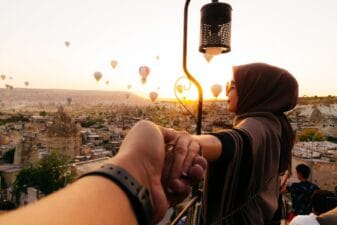I first opened my Stocks and Shares ISA years ago. And it would be fair to say I made a few mistakes in my investments along the way. If I was to start all over again, I’d learn from those errors and follow a few powerful investing rules that could lead to a supercharged second income.
I would start investing straight away
A popular phrase among investors is ‘time in the market beats timing the market’. This means that if I invest for a long time I will get better returns rather than if I try to predict the erratic rises and falls of the stock market.
And if I was starting from scratch? The earlier I start to invest, the better.
An easy way to show this is to imagine if I had started investing at 16. At that age, I reckon I could’ve put away £100 a month from my first job. That’s £1,200 a year, a fairly modest sum.
Now, let’s say I continue that amount throughout my working life. If I invested all my savings into a Stocks and Shares ISA with a 9% return (more on this in a second), I would be a millionaire by a retirement age of 66.
| 10 years | 20 years | 30 years | 40 years | 50 years | |
| £100 a month | £12,000 | £24,000 | £36,000 | £48,000 | £60,000 |
| £100 a month with 9% return | £18,972 | £63,885 | £170,211 | £421,924 | £1,017,819 |
I’d have built up £1,017,819, to be exact. This amount seems incredible from just £100 a month, but shows why investing in stocks early and for long periods works so well.
There are, of course, risks involved when it comes to stocks. And this is why the next rule is so important.
I’d lower risk by diversifying into multiple stocks
Every so often, a company like Thomas Cook goes bankrupt, and everyone who holds the stock loses most or all of their money. On the other side of the coin, if I’d invested in Amazon in 2005, I would have gained a whopping 83 times return on my money in less than two decades.
So what’s my strategy with my Stocks and Shares ISA? Well, I’d look to load up on a broad range of UK stocks in different sectors, at least 10 to 15. This way, I’d be well-hedged against risk. It does mean I’d have less chance of a ‘big win’ or two, but that’s fine as I’m doing this for the long term.
Over a long time horizon, the FTSE 100 has average returns of around 8% and the FTSE 250 has average returns of around 10%. So I think a 9% return is fair and that’s what I will use in my calculation to see how big that second income could be.
How big could my second income be?
Let’s say I can drip-feed £500 a month into my Stocks and Shares ISA. Importantly, that’s less than the £20,000 per year limit for the ISA, which means my returns would be tax-free. I’ll also assume that I take out a ‘safe withdrawal rate’ of 4% per year as my second income.
| Savings | 4% Yearly Second Income | |
| 1 year | £6,243 | £250 |
| 5 years | £37,366 | £1,495 |
| 10 years | £94,859 | £3,794 |
| 20 years | £319,426 | £12,777 |
| 30 years | £851,056 | £34,042 |
| 40 years | £2,109,619 | £84,385 |
The final figures there are spectacular, and this isn’t just pie-in-the-sky thinking. Records show there are thousands of ISA millionaires in the UK.
This is more of a general guide to aim at rather than anything I can 100% rely on, but these calculations help me see how saving and investing play out in the long term.
Even though I’m a few years into my investing journey now, a reminder like this keeps me motivated to continue putting money into my account.
Please note that tax treatment depends on the individual circumstances of each client and may be subject to change in future. The content in this article is provided for information purposes only. It is not intended to be, neither does it constitute, any form of tax advice. Readers are responsible for carrying out their own due diligence and for obtaining professional advice before making any investment decisions.







